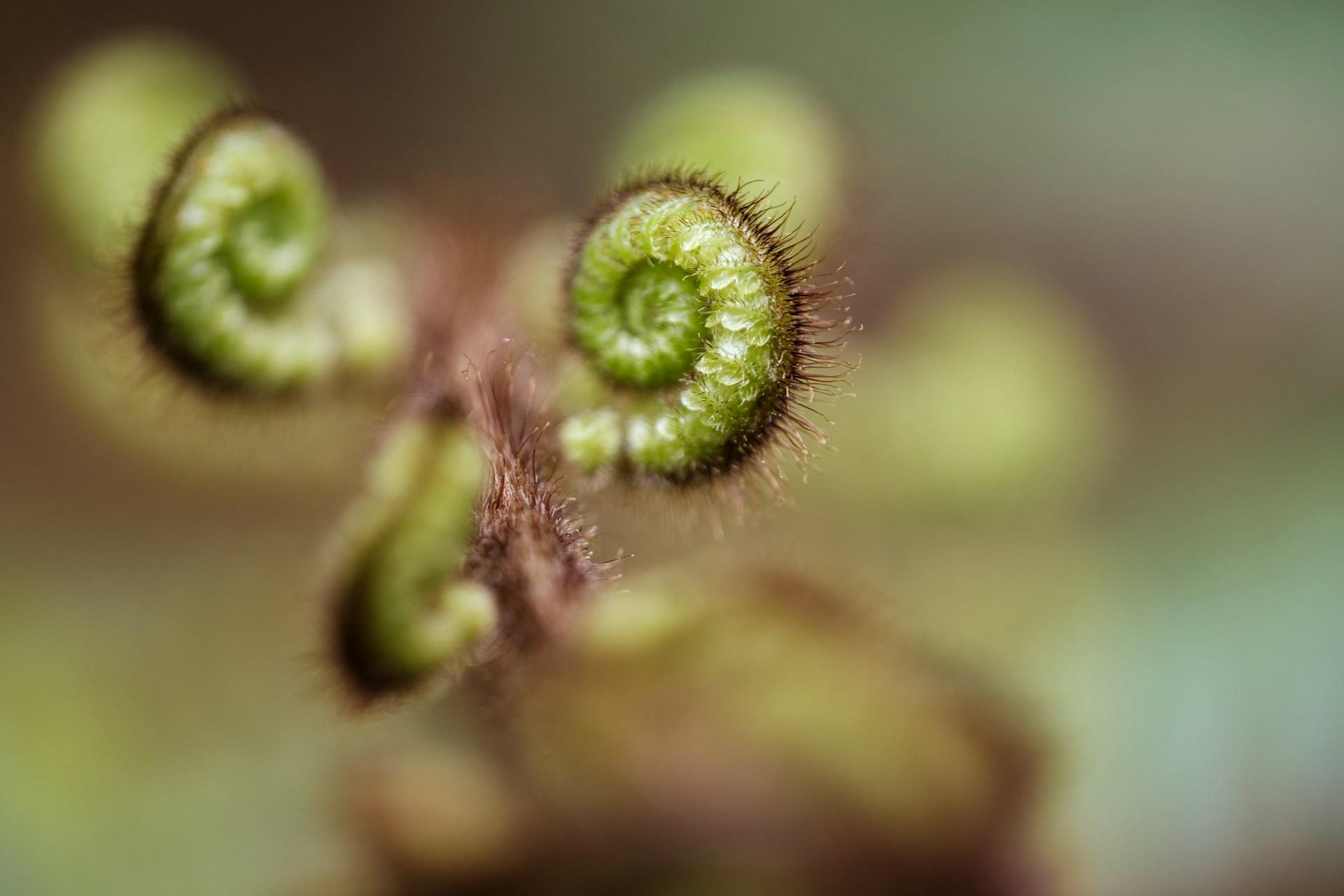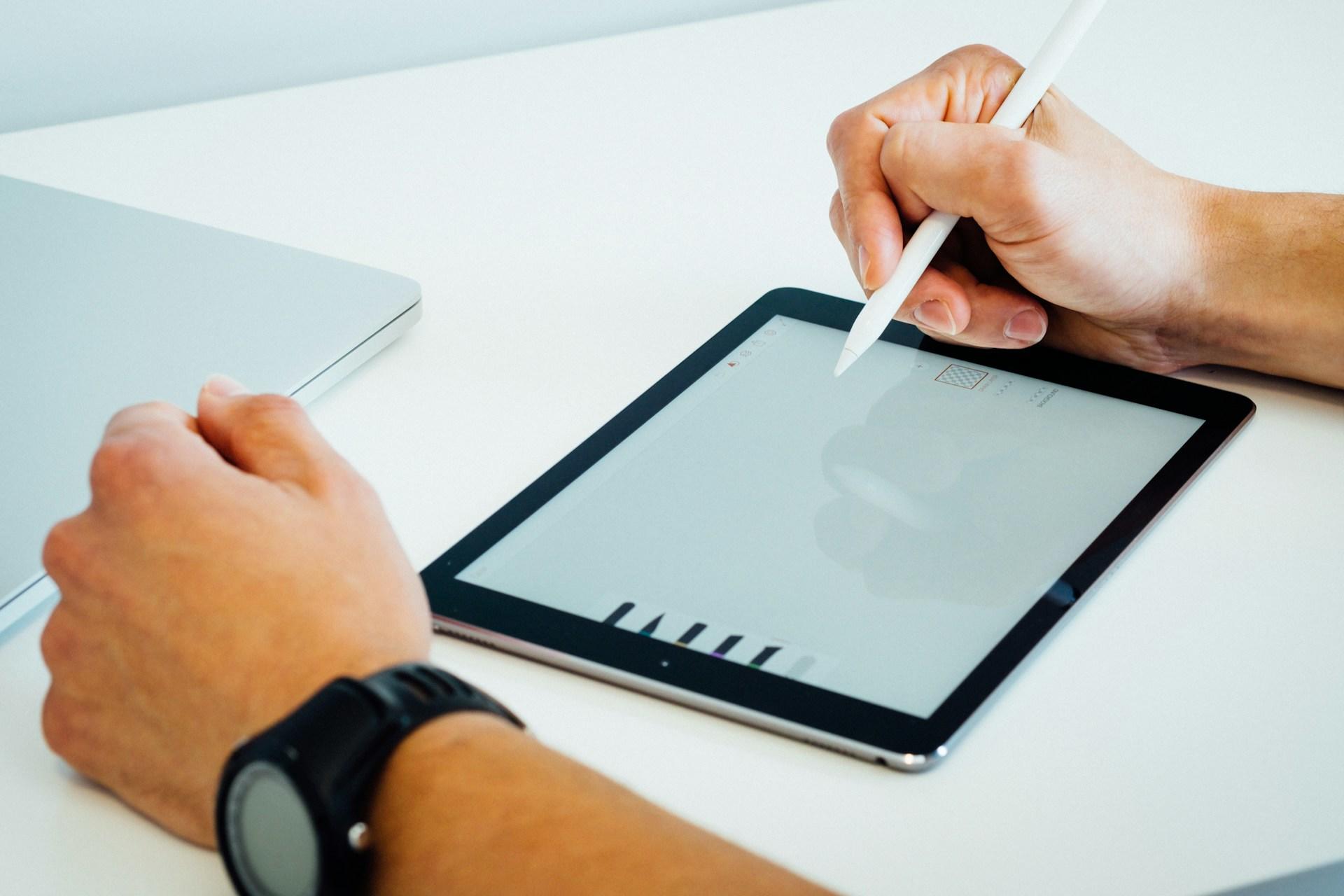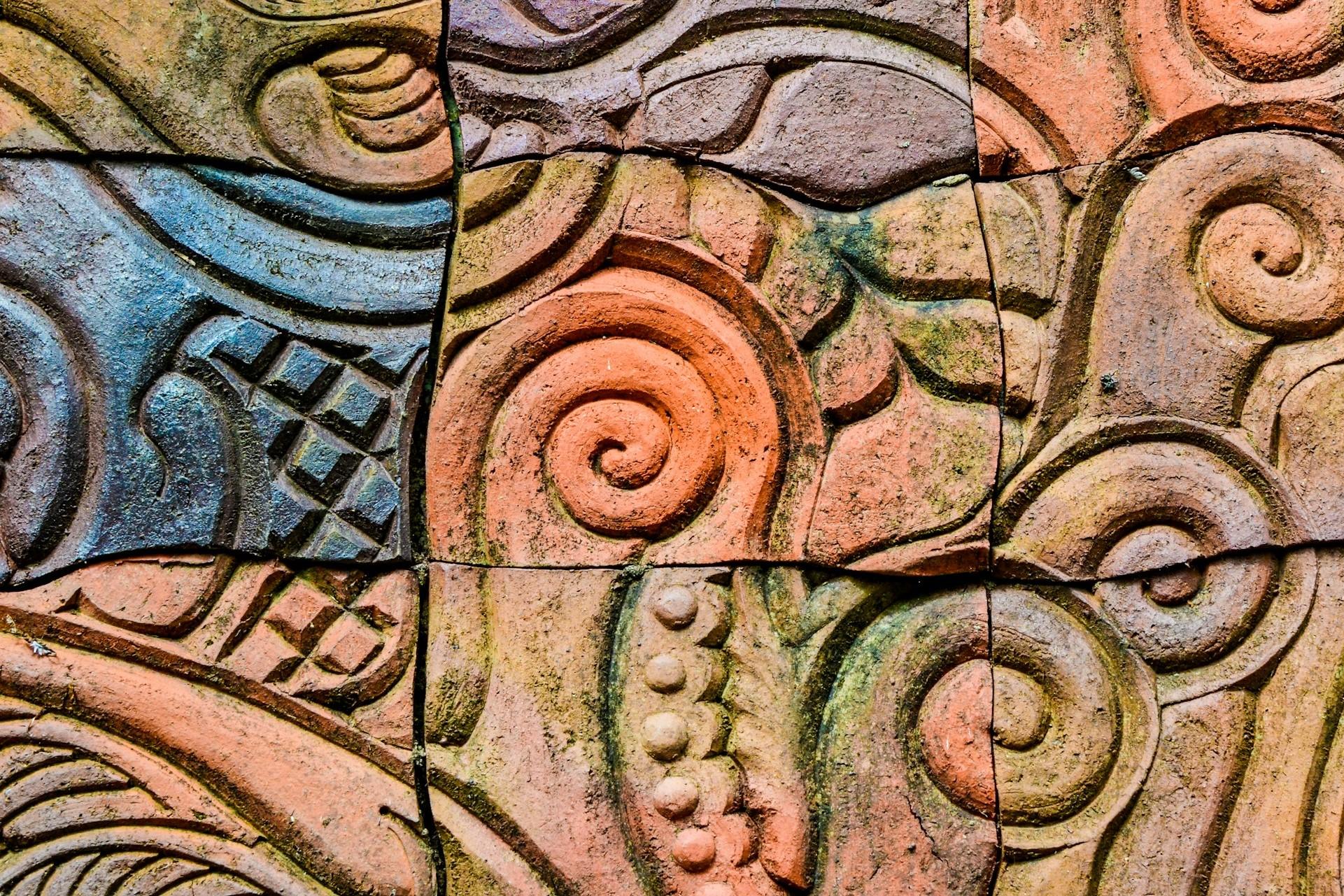Patterns and designs are a key part of Maori culture and are often instantly recognisable. As both symbols of Maori and New Zealand culture, most are rooted in Polynesian heritage. However, these patterns are more than just art and decorative elements; they reflect culture, spirit, and even genealogy.
In Maori art, the traditional painted patterns, kōwhaiwhai, are famous for their flowing, abstract, and organic motifs.
Whether they appear in tattoos, carvings, weaving, or contemporary illustration, Maori patterns have evolved while remaining culturally significant. Let's examine them, what they are, and what these designs represent in Maori culture.

The Background and Origins of Kōwhaiwhai
A kōwhaiwhai pattern can tell a story of genealogy (whakapapa), nature, and the spiritual world. Specific elements within kōwhaiwhai, like the koru (spiral) and tāniko (border patterns), can represent various concepts like growth or renewal.
These patterns originated in early Maori carving (whakairo) and painting (peitatange). The patterns were traditionally used to embellish rafters (heke) and ridge poles (tāhuhu) of Maori meeting houses (wharenui). They generally symbolise the heritage and identity of the tribe (iwi). However, they can also be found in canoes (waka) and other sacred objects.
The primary function of kōwhaiwhai is as a visual language that conveys stories of whakapa (genealogy), tribal connections, and significant events.
Since Maori culture relies heavily on oral tradition, these patterns help maintain and preserve knowledge across generations. Each region and iwi developed its own unique style that reflected its history and environment.
These patterns are typically painted in red, black, and white, and the colours are also significant. Red often represents life and vitality. Black symbolises the physical world and potential. White represents purity and enlightenment.
Basic Elements of Kōwhaiwhai Patterns
These Maori designs are often recognised by their flowing, symmetrical shapes. Within these elements and shapes, there is significant meaning and symbolism.
These elements generally represent concepts like nature, ancestry, and life cycles. Let's explore some of the most common elements.
Koru
The koru is probably the most recognisable Maori symbol featured in kōwhaiwhai patterns and is inspired by the unfurling frond of the native fern (ponga).
It symbolises new life and beginnings, with the unfurling spiral reflecting growth, renewal, and the potential for new beginnings.
The continuous, smooth curve reflects life's journey from conception to maturity.
The koru was featured in many alternative designs for the flag of New Zealand.
Multiple koru extending from a central stem symbolise the branching connections of family and ancestry or whakapapa (genealogy).
Many kōwhaiwhai use the koru, which is adapted to reflect different themes of life, nature, and continuity as required.

Manawa Line
The manawa line (heartbeat line) is often used as the backbone of different kōwhaiwhai designs.
It has several symbolic meanings, including:
- The Heartbeat of Life: The manawa line connects and sustains the different elements within the design just as a heartbeat sustains life.
- Unity and Continuity: The Manawa line emphasises the interconnected nature of all living things, flowing from generation to generation.
- Structural Connection: The line also provides a functional framework for other elements within the design and plays an aesthetic role within the kōwhaiwhai.
Typically, the Manawa line meanders gracefully through the pattern, linking together koru and other symbols seamlessly.
Tāniko
The tāniko is a border pattern often used in woven designs, such as the borders of cloaks (korowai).
These often feature triangular or geometric patterns and can symbolise things such as:
- Prestige and Status: The tāniko designs represent honour and respect, and finely woven tāniko borders are often worn by people of high status within iwi.
- Landscape Features: The triangles in tāniko often symbolise geographic features like mountains, valleys, and the contours of the land. This represents the Maori connection to the natural world.
- Protection and Strength: These design elements, with their repeating symmetrical nature, also offer structure, stability, and protection, both metaphorically and in terms of the composition and aesthetic of the overall pattern.
Unaunahi
The unaunahi pattern consists of repeating crescent shapes or fish scales. These will typically represent concepts like:
- Abundance and Prosperity: The Maori have long been seafaring people who relied on the ocean for sustenance. Naturally, many things related to the ocean and fishing represent plentiful resources and overall well-being.
- Health and Vitality: With sustenance comes health and vitality. Fish is a primary food source connected to nourishment and physical health.
- Connection to Water: As islanders, the life and culture of Maoris and Polynesians are deeply connected to the sea, as seen in the many myths and legends that feature it. Unaunahi can reflect the bond and respect for the sea and, by extension, Tangaroa, the god of the sea.
This pattern is generally more common with coastal tribes or when the pattern calls for themes of sustenance or survival.

Pākati
Pākati are sharp, repeating notches that look like a saw's teeth or a serrated blade's edge.
Usually, these can represent:
- Resilience and Strength: They signify endurance, the ability to withstand challenges, and the strength of warriors.
- Memory of Pain or Loss: Pākati can also represent grief or challenges, with sharp, jagged edges as a reminder of struggles and victories.
- Teeth of the Taniwha: Pākati patterns are often associated with the teeth of supernatural beings (taniwha), symbolising protection or warning of danger.
Visually, pākati elements add texture and contrast to the smoother and flowing curves of the Manawa line and symbols like the koru.
Kōwhaiwhai in Contemporary Māori Art and Design
The elegant curves and rich symbolism of kōwhaiwhai patterns mean they aren't just symbols of the past.
In addition to their traditional roles and deep cultural significance, kōwhaiwhai remain an essential part of Maori art and design.
They've been adapted into modern contexts and have enriched many creative fields with their use. Tattoos, jewellery, architecture, fashion, and digital media have all been inspired by kōwhaiwhai, which continue to be a powerful expression of Maori identity, heritage, and storytelling.
Kōwhaiwhai in Architecture
While kōwhaiwhai continue to be used on wharenui and other communal buildings, contemporary spaces like universities, museums, and government buildings have honoured Maori heritage with their use.
Organisations like Manaaki Whenua use kōwhaiwhai in interior spaces to reflect the connection to the land and environment.
Kōwhaiwhai patterns have also moved from traditional materials, too. While they were often seen on wood, bone, or stone, architects and designers have used them on glass, metal, and digital projections.
The patterns are also synonymous with sustainability and other typically Maori values, representing the inherent connection between culture, community, and the environment.
Kōwhaiwhai in Tā Moko
The design elements from kōwhaiwhai are also used in the traditional art of Maori tattooing. Usually, these elements represent identity, ancestry, and life stories.

They can have personal and family significance, using koru and manawa lines to reflect a person's growth, lineage, and spiritual connections.
These tattoos also allow Maori to make powerful statements about their cultural identity, resilience, and connection to their heritage, using designs that reflect this.
Jewellery and Personal Accessories
The aesthetic qualities and symbolic depth of kōwhaiwhai make such designs popular for jewellery and other accessories.
Commonly carved from pounamu (greenstone), bone, or wood, jewellery like pendants and earrings may feature koru spirals and other elements commonly found in traditional Maori patterns.
More modern adaptations mean that Maori artists and artisans use traditional kōwhaiwhai in metalwork, resins, and gemstones, blending modernity with traditional artistry.
Here's a great design lesson on kōwhaiwhai.
Digital and Graphic Design
The digital age has brought kōwhaiwhai with it. These patterns have found a home in graphic design, digital art, and other multimedia projects.
One fascinating use is augmented reality and projection mapping, where contemporary artists can create interactive kōwhaiwhai displays, allowing viewers to engage virtually with Maori art and design.

Respect and Ethical Considerations
As kōwhaiwhai patterns are more than just design elements, their use in contemporary art, design, and commercial products must be done with the utmost cultural sensitivity, respect, and understanding.
As we've seen, all of these designs and the design elements within them hold deep symbolism and meaning and are more than the shapes, lines, and composition.
It's important that anyone using these, especially those pākehā and others from outside the Maori culture, understand the cultural significance of these patterns.
They're often visual representations of Maori worldviews, ancestry, and stories, not just a nice pattern to use, especially on commercial products.
Before using them, we recommend learning the symbolism and acknowledging the history and cultural context in which these patterns exist and are used.
If in doubt, engage with Maori communities and artists to learn more about them, and be sure to seek permission before using any patterns.















